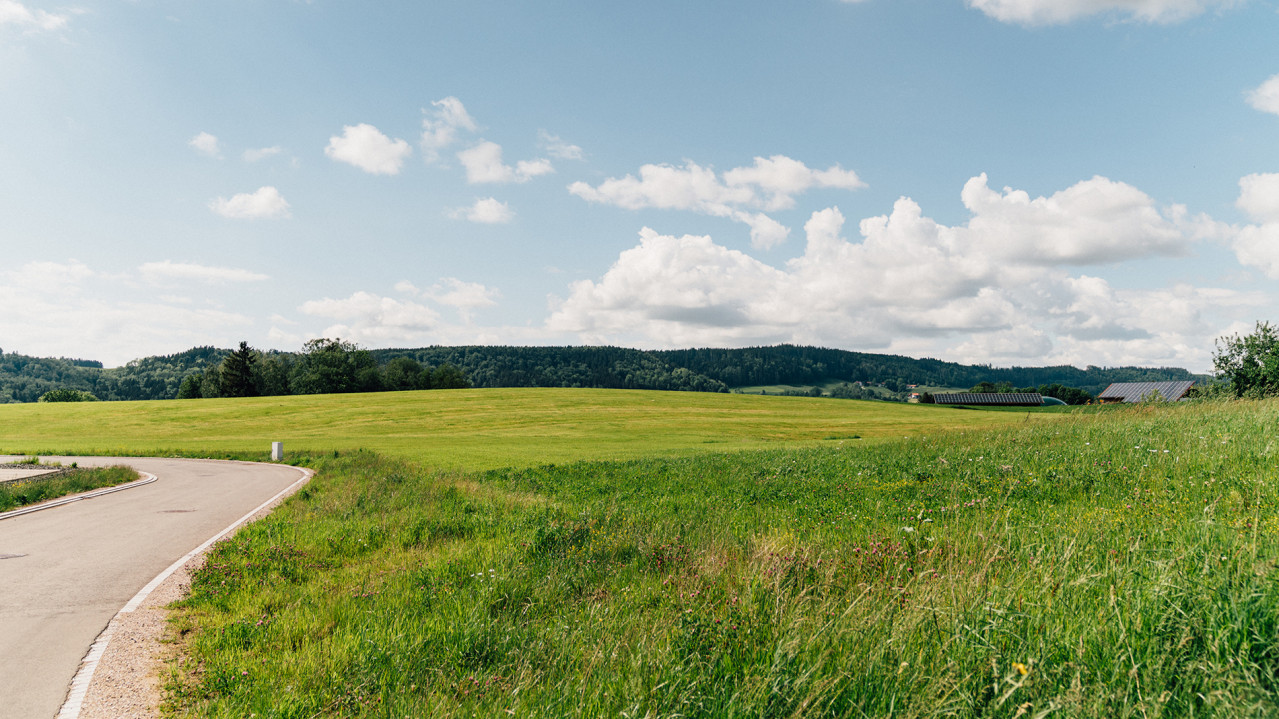
Renewable energies - Regenerative sources for clean electricity
The energy world is amid a fundamental change, at the end of which there should be no more energy generation from coal, oil, or nuclear power in the future.
Therefore, green electricity, which is generated from renewable energy sources such as wind, water, geothermal energy, biomass, and the sun, is on the rise. Let's look at renewable energies' different types, advantages, and successes.
Table of contents
- Renewable energies in the electricity mix
- Transformation of the electricity market
- What types of renewable energies are there?
- Photovoltaics and solar thermal energy
- Wind power
- Geothermal energy
- Biomass
- How can renewable energies be stored?
- Summary
The electricity mix is the difference.
One of the biggest challenges for renewable energies is their irregularity. While electricity from conventional power plants is constantly available, the supply of green electricity fluctuates depending on the weather, season, and region. This can be remedied - with an electricity mix from various sources of renewable energies. If there is not enough wind power, because it is a windless day in the region, this deficit is compensated for by other energy sources or by wind power from other windier regions. In this context, it is also important to have sufficient storage facilities for green electricity to compensate for the fluctuations.
Renewable energies are transforming the electricity market.
Electricity from renewable sources poses several challenges to the energy market. Where previously centralised power plants distributed electricity and corporations had a de facto monopoly, the energy transition is creating small, decentralised supply islands. These islands must now be interconnected. Above all, private households are becoming producers and must be integrated into the energy infrastructure. Around 1.3 million of Germany's 1.6 million photovoltaic systems are no larger than 30 kWp and thus mostly belong to households or farmers.
Since the supply of electricity from wind and sun fluctuates, for example, on days with bright sunshine or at times of low consumption, grid fluctuations must be balanced out somehow. Here, intelligently networked battery storage systems offer the possibility of temporarily storing surplus energy for a short time. The challenges of the energy transition can only be solved if the infrastructure is digitalised and there are sufficient storage facilities in every region.
The forms of renewable energies.
In Germany as an example, renewable energies have already become firmly established. Wind, solar, and other sustainable energy sources have already become competitive with coal and nuclear power. They are even cheaper when the follow-up costs of fossil and nuclear energy are considered. This example shows how far we have already come: On 15 May 2016, a sunny and windy Sunday, 100% of the total electricity demand in Germany was covered by renewable energy for the first time for about one hour. A success for renewables and for our energy future!
The possibilities of generating energy from renewable sources are presented here. Methods of energy and heat generation from photovoltaics, solar thermal energy, wind power, geothermal energy and biomass will be presented. Of course, there are many other interesting approaches, such as tidal power plants, downdraft wind turbines or osmotic power plants.
Photovoltaics and solar thermal energy.
The sun is a gigantic power plant. Incessantly, hydrogen nuclei fuse into helium, releasing huge amounts of energy. This energy reaches our planet in the form of warm, bright sun rays, which could cover the global energy demand for eight years every day. This enormous mass of energy can be used in two ways - either to heat liquids directly and indirectly or to generate electricity. In the case of systems for generating heat, we speak of solar thermal systems. When it comes to generating electricity, we are talking about photovoltaic systems. In common parlance, both are often colloquially referred to as solar systems.
For heat generation, solar thermal systems on house roofs are the most widespread in Germany. They collect sunlight via collectors and use it to heat a liquid. This fluid heats water in a boiler, which in turn can be used for heating or as hot water. This saves a large part of the heating costs and the fuel previously used. Outside of households, solar thermal power plants are operated using parabolic troughs, parabolic mirrors, or heliostats. They concentrate the light irradiation, for example via numerous mirrors, onto an absorber. Extremely high temperatures are then generated in this absorber, so that steam can be produced. A turbine then converts this heat into electrical energy. Such solar power plants can supply entire regions with environmentally friendly electricity, depending on the capacity of the plant.
Roof-mounted systems that generate electricity are photovoltaic systems. They generate electricity using daylight. While in the past their energy was mainly fed completely into the grid, nowadays people mostly try to use most of the energy for their own consumption. Due to the sharp drop in prices for solar energy storage, PV systems and storage are often combined, enabling households to supply themselves with up to 75% of the energy they generate each year. The solar electricity generated by photovoltaics can also be used to produce hot water by using an electric heater. Therefore, you can not only save on your energy bills, but also reduce your heating costs at the same time.
Renewable energy source Wind power.
As early as the Middle Ages, windmills were used to harness the power of the wind to grind grain. Modern “mills”, i.e., wind turbines, work on the same principle, but nowadays they generate electricity. Thanks to accurate weather forecasts, wind turbines operate much more reliably nowadays, of course, and periods of low wind can be better predicted.
Coastal regions are particularly wind-safe. There, offshore plants are in the sea, which make use of the wind. Entire wind farms adorn the North and Baltic Seas, for example. These are often large-scale projects – the German Wind Energy Association counted almost 1,000 turbines in 2016.
In addition to offshore wind farms, there are also onshore wind turbines – currently up to 30,000 in Germany. In recent years, they have become much more efficient and powerful, so modern turbines can now generate twice as much power as old turbines of a similar size. Wind turbines are not yet very widespread in the private sector. The so-called small wind turbines are available for households for outputs of up to 5 or 6 kWp. In the agricultural environment, they can also reach outputs of up to 30 kWp.
Geothermal energy – renewable energy from the earth.
Our earth has a soft core. Up to 5,000 degrees Celsius is the temperature of the viscous interior of our planet, which bubbles under the 10 - 70-kilometre-thick earth's crust. But this geothermal heat rises to reachable depths where it can be converted into heat or electricity. Geothermal energy always depends on geological conditions. However, its potential as a renewable energy source is estimated to be very high.
In deep geothermal energy, a thermal power plant pumps water with a temperature of up to 200 degrees Celsius from depths of up to five kilometres. When the water is hot enough, electricity can be generated from it. Geothermal energy is also possible at depths of only a few metres. To use it, geothermal probes are buried in the ground, which can heat buildings or entire streets in winter.
Geothermal heat pumps work with this environmental heat and make use of temperature differences in the surroundings. The environmental heat warms up a liquid coolant, which soon evaporates. A compressor then compresses the now gaseous mixture, which becomes hotter as a result. The heat pump then transfers this heat to the heating system or hot water. Such a system only needs electricity and no more fuels. Many owners of a PV system and a solar power storage unit, therefore, couple their devices with such a heat pump - and thus operate it with their own electricity. This effectively reduces their own heating costs.
Biomass - secure base load with points of criticism.
Biomass is another form of renewable energy. Plants such as rape or maize are usually used for this and stored in large tanks. When they decompose, gas is produced that is burned to generate energy or used as oil in biofuels. However, the ecological benefit of biomass is controversial and outlined with the controversy "tank or plate". After all, the products used are foodstuffs located on agricultural land that could be used elsewhere. Another point of criticism is the environmental damage caused by huge maize monocultures, which - since they are not intended for consumption - are also sprayed. In contrast to the large biogas plants, smaller farms can also be operated with liquid manure, for example, which is produced in agriculture anyway.
How can renewable energies be stored?
Unfortunately, not all renewable energies can be stored equally well. The supply of renewable energies fluctuates greatly: solar energy is only available when the sun is shining, wind energy when the wind is blowing. Battery storage systems, such as the sonnenBatterie, counteract this and store the energy generated. When the electricity is needed, it can be made available again via the electricity storage system. Certain hydroelectric power plants can also partially compensate for a discrepancy between the supply and demand of energy by using surplus electricity to pump water into lakes and then making it available again later via energy-generating turbines. However, the output of these power plants is also limited and only a few suitable locations exist in Germany.
Another possibility is the “power to gas” method, in which a fuel gas is produced from water with the help of electric current. This gas can in turn be stored and used later as electrical energy, heat for cooking or heating, or even for gas-powered vehicles.
Summary:
Photovoltaics and solar thermal:
- Solar thermal: use of the sun's rays to heat liquids for hot water or for heating.
- Photovoltaic systems: use of the sun's rays to generate electricity
- in combination with a storage system can mean up to 75% self-sufficiency through self-generated electricity
- both methods also suitable for private households
Renewable energy source Wind power:
- Wind moves the wind turbines, thus generating electricity
- onshore (on land) & offshore (wind farms in water) plants
- Private use rather low, small wind turbines for households up to 5 or 6 kWp
- Small-scale power plant + photovoltaic system + battery storage interesting for northern Germany
Geothermal energy - renewable energy from the earth:
- Geothermal energy means a thermal power station pumps hot water up from a depth of approx. 5 km, which can then be used to generate electricity.
- Use e.g. geothermal probes to heat streets and buildings.
- Private: geothermal heat pumps supply heat to the heating system or for hot water and help to reduce heating costs.
- Coupling of PV systems + storage gives the possibility to operate heat pumps with own electricity, thus saving heating costs and electricity costs.
Biomass - secure base load with points of criticism:
- Biomass: Plants such as rape & maize are stored in large tanks & gas is produced through decomposition.
- This is burnt for energy or used as oil in biofuels.
- possibly biogas - plants operated by liquid manure
- Biomass is not really an issue for private consumption.






